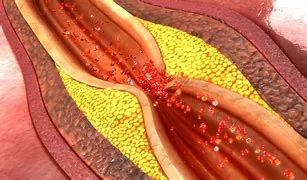Coronary Heart Disease (CHD) is a prevalent medical condition that affects millions of people worldwide. This article aims to delve into the intricacies of CHD, including its causes, symptoms, diagnosis, and treatment options.
What is CHD?
CHD, also known as coronary artery disease (CAD) or ischemic heart disease (IHD), is a condition characterized by the narrowing or blockage of the coronary arteries. These arteries supply oxygen-rich blood to the heart muscle, and when they become narrowed or blocked, it can lead to various cardiovascular complications.
Causes of CHD
The primary cause of CHD is the buildup of plaque in the coronary arteries, a process known as atherosclerosis. Plaque is made up of cholesterol, calcium, and other substances found in the blood. Over time, this plaque can harden and narrow the arteries, reducing blood flow to the heart.
Several factors contribute to the development of CHD, including:
1. High Cholesterol Levels: Elevated levels of LDL (low-density lipoprotein) cholesterol, often referred to as “bad” cholesterol, can lead to plaque buildup in the arteries.
2. High Blood Pressure: Hypertension puts strain on the heart and arteries, increasing the risk of CHD.
3. Smoking: Tobacco smoke contains harmful chemicals that can damage the blood vessels and accelerate the development of atherosclerosis.
4. Diabetes: People with diabetes are at a higher risk of developing CHD due to elevated blood sugar levels.
5. Obesity: Excess body weight, especially around the abdomen, is linked to an increased risk of CHD.
6. Sedentary Lifestyle: Lack of physical activity can contribute to obesity and other risk factors for CHD.
7. Family History: A family history of CHD or heart attacks can increase an individual’s risk.
Symptoms of CHD
The symptoms of CHD can vary depending on the severity of the condition. Common symptoms include:
1. Chest Pain (Angina): A feeling of pressure, tightness, or discomfort in the chest, often triggered by physical exertion or emotional stress.
2. Shortness of Breath: Difficulty breathing, especially during physical activity or when lying down.
3. Fatigue: Feeling unusually tired or lacking energy, which may be a sign of reduced heart function.
4. Heart Palpitations: Sensations of rapid, irregular, or fluttering heartbeats.
5. Dizziness or Lightheadedness: Feeling faint or dizzy, especially when standing up quickly.
It’s important to note that some individuals with CHD may experience silent ischemia, where they have coronary artery disease without noticeable symptoms. Regular medical check-ups and screenings are crucial for early detection and management of CHD.
Diagnosis of CHD
Diagnosing CHD typically involves a combination of medical history review, physical examination, and diagnostic tests. These tests may include:
1. Electrocardiogram (ECG or EKG): This test records the electrical activity of the heart and can detect abnormal heart rhythms or signs of ischemia.
2. Echocardiogram: An ultrasound of the heart that provides detailed images of its structure and function.
3. Stress Test: Evaluates how the heart responds to physical stress, such as exercise, to detect any abnormalities.
4. Coronary Angiography: A procedure that involves injecting a contrast dye into the coronary arteries and taking X-ray images to assess blockages or narrowing.
5. Cardiac CT Scan or MRI: Imaging tests that can provide detailed pictures of the heart and blood vessels.
Treatment Options for CHD
The management of CHD aims to reduce symptoms, prevent complications, and improve overall heart health. Treatment options may include:
1. Lifestyle Modifications: Adopting a heart-healthy lifestyle is crucial, including regular exercise, a balanced diet low in saturated fats and cholesterol, smoking cessation, and weight management.
2. Medications: Doctors may prescribe medications to control cholesterol levels, lower blood pressure, manage diabetes, prevent blood clots, and relieve symptoms such as angina.
3. Cardiac Rehabilitation: A structured program that includes exercise training, education on heart-healthy habits, and emotional support for individuals recovering from CHD events.
4. Interventional Procedures: In cases of severe blockages, procedures such as angioplasty with stent placement or coronary artery bypass grafting (CABG) may be recommended to improve blood flow to the heart.
5. Monitoring and Follow-Up: Regular monitoring, follow-up appointments, and ongoing management are essential to track progress, adjust treatment plans as needed, and prevent future cardiac events.
Conclusion
CHD is a complex and serious condition that requires comprehensive management to improve outcomes and quality of life for affected individuals. By understanding the causes, symptoms, diagnosis, and treatment options for CHD, both healthcare professionals and patients can work together to mitigate risks, promote heart health, and enhance overall well-being. Early intervention, lifestyle modifications, and adherence to medical recommendations play key roles in managing CHD effectively.

